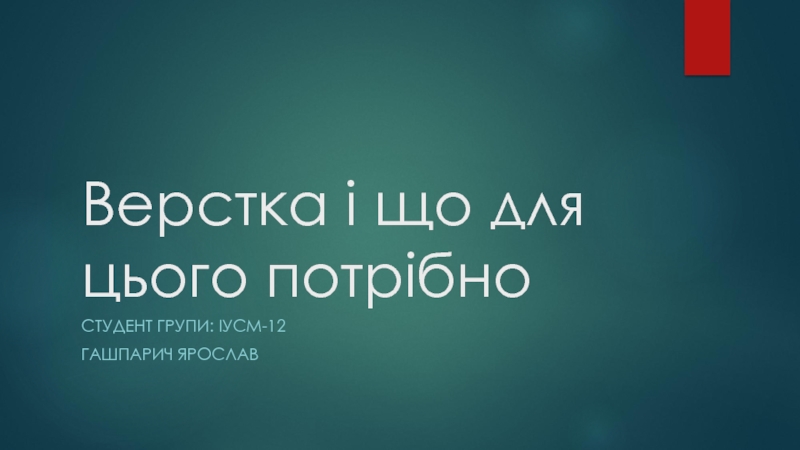Scheduling
- Главная
- Разное
- Дизайн
- Бизнес и предпринимательство
- Аналитика
- Образование
- Развлечения
- Красота и здоровье
- Финансы
- Государство
- Путешествия
- Спорт
- Недвижимость
- Армия
- Графика
- Культурология
- Еда и кулинария
- Лингвистика
- Английский язык
- Астрономия
- Алгебра
- Биология
- География
- Детские презентации
- Информатика
- История
- Литература
- Маркетинг
- Математика
- Медицина
- Менеджмент
- Музыка
- МХК
- Немецкий язык
- ОБЖ
- Обществознание
- Окружающий мир
- Педагогика
- Русский язык
- Технология
- Физика
- Философия
- Химия
- Шаблоны, картинки для презентаций
- Экология
- Экономика
- Юриспруденция
Processes and threads. (Chapter 2) презентация
Содержание
- 1. Processes and threads. (Chapter 2)
- 2. Processes The Process Model Multiprogramming of four
- 3. Process Creation Principal events that cause process
- 4. Process Termination Conditions which terminate processes Normal
- 5. Process Hierarchies Parent creates a child process,
- 6. Process States (1) Possible process states running blocked ready Transitions between states shown
- 7. Process States (2) Lowest layer of process-structured
- 8. Implementation of Processes (1) Fields of a process table entry
- 9. Implementation of Processes (2) Skeleton of what
- 10. Threads The Thread Model (1) (a) Three
- 11. The Thread Model (2) Items shared by
- 12. The Thread Model (3) Each thread has its own stack
- 13. Thread Usage (1) A word processor with three threads
- 14. Thread Usage (2) A multithreaded Web server
- 15. Thread Usage (3) Rough outline of code
- 16. Thread Usage (4) Three ways to construct a server
- 17. Implementing Threads in User Space A user-level threads package
- 18. Implementing Threads in the Kernel A threads package managed by the kernel
- 19. Hybrid Implementations Multiplexing user-level threads onto kernel- level threads
- 20. Scheduler Activations Goal – mimic functionality of
- 21. Pop-Up Threads Creation of a new thread
- 22. Making Single-Threaded Code Multithreaded (1) Conflicts between threads over the use of a global variable
- 23. Making Single-Threaded Code Multithreaded (2) Threads can have private global variables
- 24. Interprocess Communication Race Conditions Two processes want to access shared memory at same time
- 25. Critical Regions (1) Four conditions to provide
- 26. Critical Regions (2) Mutual exclusion using critical regions
- 27. Mutual Exclusion with Busy Waiting (1) Proposed
- 28. Mutual Exclusion with Busy Waiting (2) Peterson's solution for achieving mutual exclusion
- 29. Mutual Exclusion with Busy Waiting (3) Entering
- 30. Sleep and Wakeup Producer-consumer problem with fatal race condition
- 31. Semaphores The producer-consumer problem using semaphores
- 32. Mutexes Implementation of mutex_lock and mutex_unlock
- 33. Monitors (1) Example of a monitor
- 34. Monitors (2) Outline of producer-consumer problem with
- 35. Monitors (3) Solution to producer-consumer problem in Java (part 1)
- 36. Monitors (4) Solution to producer-consumer problem in Java (part 2)
- 37. Message Passing The producer-consumer problem with N messages
- 38. Barriers Use of a barrier processes approaching
- 39. Dining Philosophers (1) Philosophers eat/think Eating needs
- 40. Dining Philosophers (2) A nonsolution to the dining philosophers problem
- 41. Dining Philosophers (3) Solution to dining philosophers problem (part 1)
- 42. Dining Philosophers (4) Solution to dining philosophers problem (part 2)
- 43. The Readers and Writers Problem A solution to the readers and writers problem
- 44. The Sleeping Barber Problem (1)
- 45. The Sleeping Barber Problem (2) Solution to sleeping barber problem.
- 46. Scheduling Introduction to Scheduling (1) Bursts of
- 47. Introduction to Scheduling (2) Scheduling Algorithm Goals
- 48. Scheduling in Batch Systems (1) An example of shortest job first scheduling
- 49. Scheduling in Batch Systems (2) Three level scheduling
- 50. Scheduling in Interactive Systems (1) Round Robin
- 51. Scheduling in Interactive Systems (2) A scheduling algorithm with four priority classes
- 52. Scheduling in Real-Time Systems Schedulable real-time system
- 53. Policy versus Mechanism Separate what is allowed
- 54. Thread Scheduling (1) Possible scheduling of user-level
- 55. Thread Scheduling (2) Possible scheduling of kernel-level
Слайд 1Processes and Threads
Chapter 2
2.1 Processes
2.2 Threads
2.3 Interprocess communication
2.4 Classical IPC problems
2.5
Слайд 2Processes
The Process Model
Multiprogramming of four programs
Conceptual model of 4 independent, sequential
processes
Only one program active at any instant
Only one program active at any instant
Слайд 3Process Creation
Principal events that cause process creation
System initialization
Execution of a process
creation system
User request to create a new process
Initiation of a batch job
User request to create a new process
Initiation of a batch job
Слайд 4Process Termination
Conditions which terminate processes
Normal exit (voluntary)
Error exit (voluntary)
Fatal error (involuntary)
Killed
by another process (involuntary)
Слайд 5Process Hierarchies
Parent creates a child process, child processes can create its
own process
Forms a hierarchy
UNIX calls this a "process group"
Windows has no concept of process hierarchy
all processes are created equal
Forms a hierarchy
UNIX calls this a "process group"
Windows has no concept of process hierarchy
all processes are created equal
Слайд 7Process States (2)
Lowest layer of process-structured OS
handles interrupts, scheduling
Above that layer
are sequential processes
Слайд 9Implementation of Processes (2)
Skeleton of what lowest level of OS does
when an interrupt occurs
Слайд 10Threads
The Thread Model (1)
(a) Three processes each with one thread
(b) One
process with three threads
Слайд 15Thread Usage (3)
Rough outline of code for previous slide
(a) Dispatcher thread
(b)
Worker thread
Слайд 20Scheduler Activations
Goal – mimic functionality of kernel threads
gain performance of user
space threads
Avoids unnecessary user/kernel transitions
Kernel assigns virtual processors to each process
lets runtime system allocate threads to processors
Problem: Fundamental reliance on kernel (lower layer)
calling procedures in user space (higher layer)
Avoids unnecessary user/kernel transitions
Kernel assigns virtual processors to each process
lets runtime system allocate threads to processors
Problem: Fundamental reliance on kernel (lower layer)
calling procedures in user space (higher layer)
Слайд 21Pop-Up Threads
Creation of a new thread when message arrives
(a) before message
arrives
(b) after message arrives
(b) after message arrives
Слайд 22Making Single-Threaded Code Multithreaded (1)
Conflicts between threads over the use of
a global variable
Слайд 24Interprocess Communication
Race Conditions
Two processes want to access shared memory at same
time
Слайд 25Critical Regions (1)
Four conditions to provide mutual exclusion
No two processes simultaneously
in critical region
No assumptions made about speeds or numbers of CPUs
No process running outside its critical region may block another process
No process must wait forever to enter its critical region
No assumptions made about speeds or numbers of CPUs
No process running outside its critical region may block another process
No process must wait forever to enter its critical region
Слайд 27Mutual Exclusion with Busy Waiting (1)
Proposed solution to critical region problem
(a)
Process 0. (b) Process 1.
Слайд 29Mutual Exclusion with Busy Waiting (3)
Entering and leaving a critical region
using the
TSL instruction
TSL instruction
Слайд 34Monitors (2)
Outline of producer-consumer problem with monitors
only one monitor procedure active
at one time
buffer has N slots
buffer has N slots
Слайд 38Barriers
Use of a barrier
processes approaching a barrier
all processes but one blocked
at barrier
last process arrives, all are let through
last process arrives, all are let through
Слайд 39Dining Philosophers (1)
Philosophers eat/think
Eating needs 2 forks
Pick one fork at a
time
How to prevent deadlock
How to prevent deadlock
Слайд 46Scheduling
Introduction to Scheduling (1)
Bursts of CPU usage alternate with periods of
I/O wait
a CPU-bound process
an I/O bound process
a CPU-bound process
an I/O bound process
Слайд 50Scheduling in Interactive Systems (1)
Round Robin Scheduling
list of runnable processes
list of
runnable processes after B uses up its quantum
Слайд 52Scheduling in Real-Time Systems
Schedulable real-time system
Given
m periodic events
event i occurs within
period Pi and requires Ci seconds
Then the load can only be handled if
Then the load can only be handled if
Слайд 53Policy versus Mechanism
Separate what is allowed to be done with how
it is done
a process knows which of its children threads are important and need priority
Scheduling algorithm parameterized
mechanism in the kernel
Parameters filled in by user processes
policy set by user process
a process knows which of its children threads are important and need priority
Scheduling algorithm parameterized
mechanism in the kernel
Parameters filled in by user processes
policy set by user process
Слайд 54Thread Scheduling (1)
Possible scheduling of user-level threads
50-msec process quantum
threads run 5
msec/CPU burst
Слайд 55Thread Scheduling (2)
Possible scheduling of kernel-level threads
50-msec process quantum
threads run 5
msec/CPU burst




























































